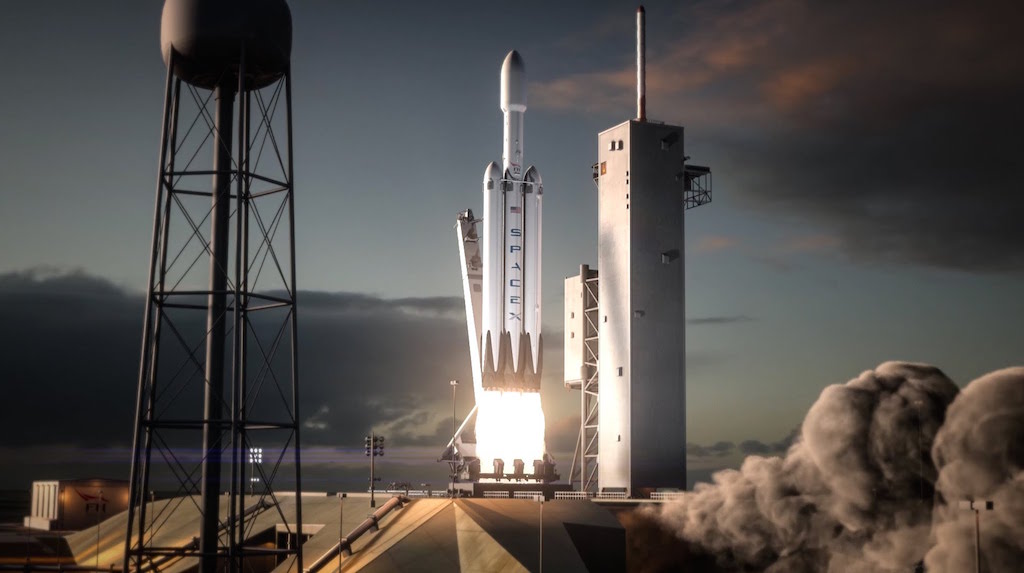

News
SpaceX’s massive Falcon Heavy rocket aims for December 29 inaugural launch
Based on information released by NASASpaceflight.com, a highly reliable source of insider details, SpaceX’s first Falcon Heavy rocket could roll out to the LC-39A launch pad before the end of November, less than a month away. While the first roll-out (or two) will be dedicated solely to “Wet Dress Rehearsals” (WDR), this will be the first time the iconic vehicle makes it to the pad, and will be a historic event regardless of what follows.
No earlier than (NET) “late-November”, the first WDR will see Falcon Heavy go through the usual motions of propellant loading while also conducting an array of systems checks and validations to verify that things are proceeding as expected. This first test will not culminate in any sort of hot-fire, and is more intended to verify that the massive rocket is playing well with the modifications made to the launch pad and the Transporter/Erector/Launcher (TEL) that carries it from the integration facilities to the pad. If major issues come up, they will be dealt with and followed by a second identical WDR. If there are no issues with the first WDR, the second rehearsal could smoothly morph into the first static fire of the integrated vehicle.
As Chris Gebhardt of NSF discusses in some detail, the first Falcon Heavy static fire(s) conducted at LC-39A will be of groundbreaking importance, as SpaceX is currently unable to test fully-integrated Falcon Heavy vehicles at its McGregor, Texas facilities due to the rocket’s sheer power. A lot, thus, rests on these first static fires, currently scheduled to begin around December 15th.
Given the distinctly experimental nature of Falcon Heavy’s inaugural launch, specific dates are best taken as general placemarkers, and the actual dates of the first flow depend entirely upon the tests that precede each subsequent step. Nevertheless, the dates provided by NASASpaceflight point to Falcon Heavy’s first static fire on December 15th, followed two weeks later by a tentative launch date of December 29th.
Staying focused on Mars: Is Falcon Heavy necessary?
Even an uncertain launch date of that specificity is still a historic event for Falcon Heavy, long lampooned and straw-manned as an example of SpaceX’s silly pie-in-the-sky claims and Elon Musk’s oversimplification of complex engineering tasks. There is a grain of truth to such contentions, but they tend to miss the point by huge margins. The actual market for mid-level heavy-lift launch vehicles like Falcon Heavy is quite simply too small to be a major motivator for a commercial launch company like SpaceX. One must remember that SpaceX was not founded to be a run-of-the-mill launch provider. The company’s goal, as has been reiterated ad infinitum, is “enabling human life on Mars”, something that has explicitly prefaced every single job posting on the company’s website for more than half a decade.
For a time, it appeared that Falcon Heavy might eventually be used to enable SpaceX’s Red Dragon program, intended to field-test the technologies needed for month-long cruises in deep space and landing large payloads on Mars. However, the program was cancelled earlier this year, in favor of what Musk called “vastly bigger ships”. Indeed, updated Mars plans unveiled on September 29th showed that SpaceX was forging ahead with an updated BFR and BFS, and hopes to fly its first missions to Mars in 2022.
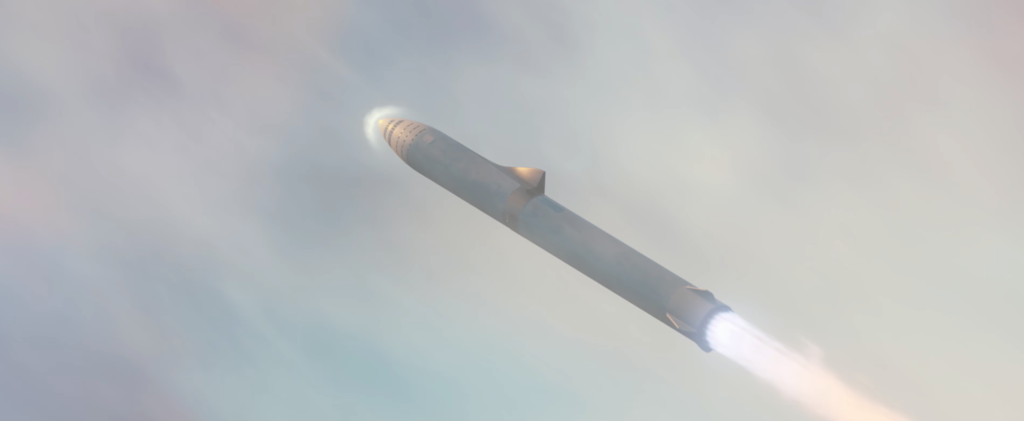
SpaceX’s massive BFR, intended to create and support a human colony on Mars, is visualized taking to the sky. Experience from operating Falcon Heavy will likely benefit BFR once it eventually begins hot-fire testing. (SpaceX)
Falcon Heavy will admittedly become the most powerful operational launch vehicle when it first lifts off in approximately two months, and it will likely retain that title well into 2020, when NASA’s Space Launch System may conduct its first launch. However, regardless of the impressive technological accomplishments it will embody, Falcon Heavy simply is not powerful or affordable enough to ever realistically enable a sustained human presence on Mars. SpaceX does have a small number of customers actively waiting with payloads for Falcon Heavy – its second mission is currently penciled in for June 2018 – and it is reasonable to assume that some or all of those missions will be completed simply out of due diligence. SpaceX may also be motivated to continue the Falcon Heavy program as a possible entrant in a recently-announced USAF competition meant to partially fund the development of multiple US-built heavy-lift launch vehicles.
More simply still, experience derived from igniting and simultaneously operating Falcon Heavy’s 27 Merlin 1D rocket engines will to some extent benefit BFR’s development and operations, as the conceptual vehicle is currently expected to host 31 Raptor engines on its first stage.
- Taken on October 9th by Ted Meyer, this airborne shot shows that LZ-1’s second pad (on the left) is close to completion. (tedwardmeyer/Instagram)
- LZ-1’s operational landing pad has seen hosted multiple successful landings from 2016-2017. (SpaceX)
- The base of the TEL now sports multiple additional launch clamps (large grey protrusions) that will be needed for Falcon Heavy’s three first stage cores. (SpaceX)
Whether Falcon Heavy is to remain a development or production priority for SpaceX after its first several launches is unclear, but the vehicle’s inaugural launch and all subsequent launches are bound to be spectacles to behold. The company’s second Florida-based launch pad, intended to support two simultaneous landings of Falcon Heavy’s side boosters, appears to be nearly complete. At LC-39A, the facility’s TEL already sports major visible modifications necessary for it to operate with Falcon Heavy. All three of the first Heavy’s first stage cores have already completed hot-fire testings in Texas and are now located at Cape Canaveral, awaiting their first integrated tests later this month. Delays to the December 29th launch date are probable, but the various components needed for Falcon Heavy’s first launch have truly come together, and the vehicle’s launch is now simply a matter of “when”. Place your bets!
Elon Musk
Elon Musk confirms Grok 4 launch on July 9 with livestream event
The rollout will be accompanied by a livestream at 8 p.m. Pacific Time.
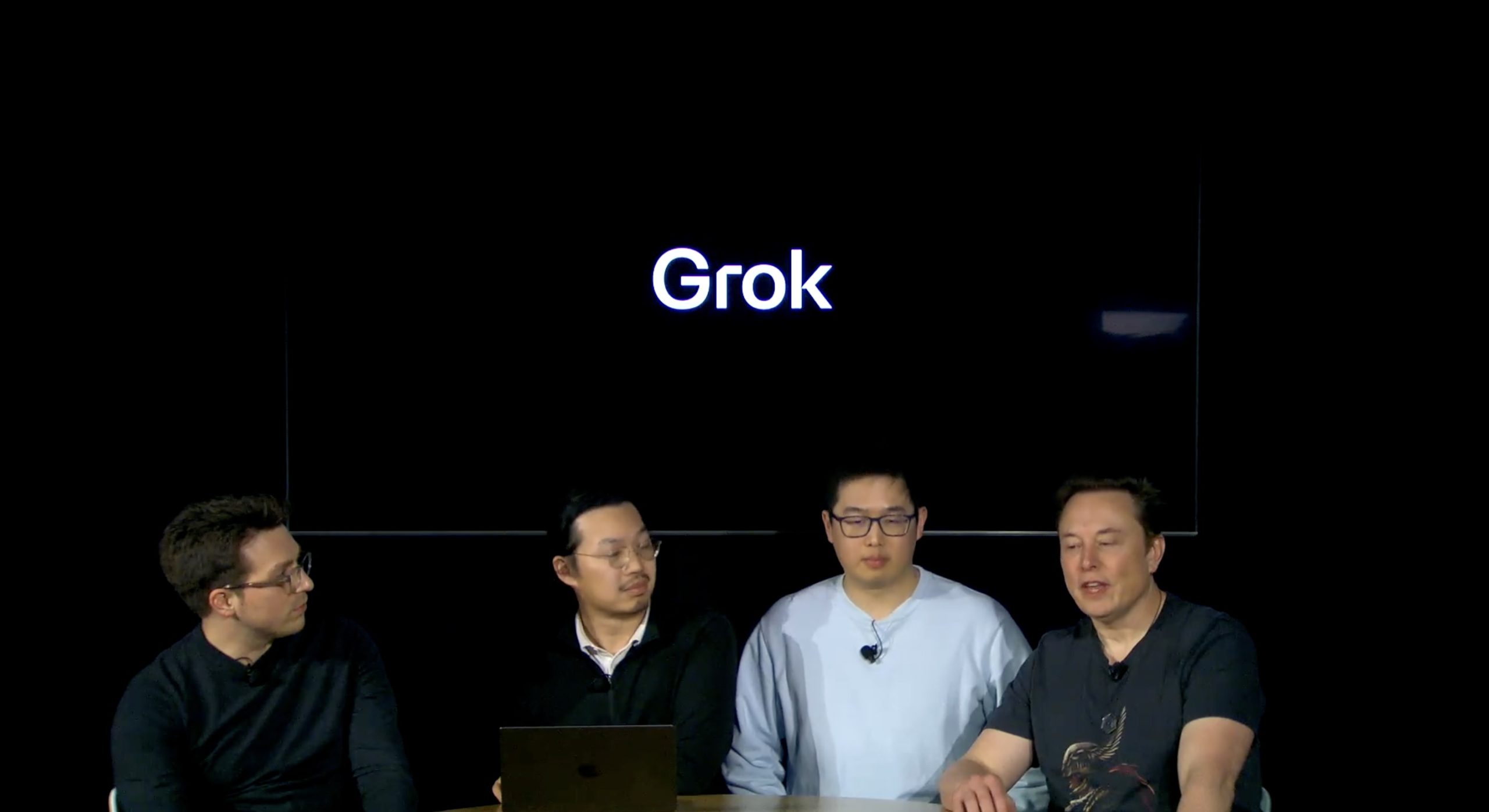
Elon Musk has officially confirmed that Grok 4, the latest version of xAI’s large language model, will launch on July 9. The rollout will be accompanied by a livestream at 8 p.m. Pacific Time, hosted on xAI’s official account on X.
xAI goes straight to Grok 4
Back in May, leaks indicated that xAI was getting ready to ship Grok 3.5. Considering Musk’s recent comments, however, it appears that the artificial intelligence startup would be focusing on the large language model’s fourth iteration instead. As noted in a Financial Express report, users on X have sighted references to Grok 4 in the lead up to the update’s launch, such as “grok-4-prod-mimic” and “Grok 4 Code.”
Musk’s Grok 4 announcement comes as AI competition intensifies between major players including OpenAI, Google, and xAI. With Musk’s Colossus supercomputer fully operational in Memphis, xAI appears to be accelerating its AI product roadmap.
Musk pushes Grok toward political neutrality
Grok 4’s launch also follows a recent controversy involving political bias, as noted in a CNN report. Last week, Grok responded to a user on X stating that political violence in the U.S. since 2016 had come more from the political right than the left. The chatbot noted in a later reply that its answer was based on information from sources like Reuters, the Journal of Democracy, and University of Maryland studies.
Musk stated that Grok’s response was a “major fail.” “Major fail, as this is objectively false. Grok is parroting legacy media. Working on it,” he wrote in a post on X. By the end of June, Musk noted that he was “grinding all night with the xAI team” and that they were making “good progress.” He also stated that the model “Will be called Grok 4. Release just after July 4th. Needs one more big run for a specialized coding model.”
News
Tesla opens massive solar Supercharger station in California
The Supercharger opened to customers ahead of Fourth of July weekend, while Tesla continues phase two of construction on the site.
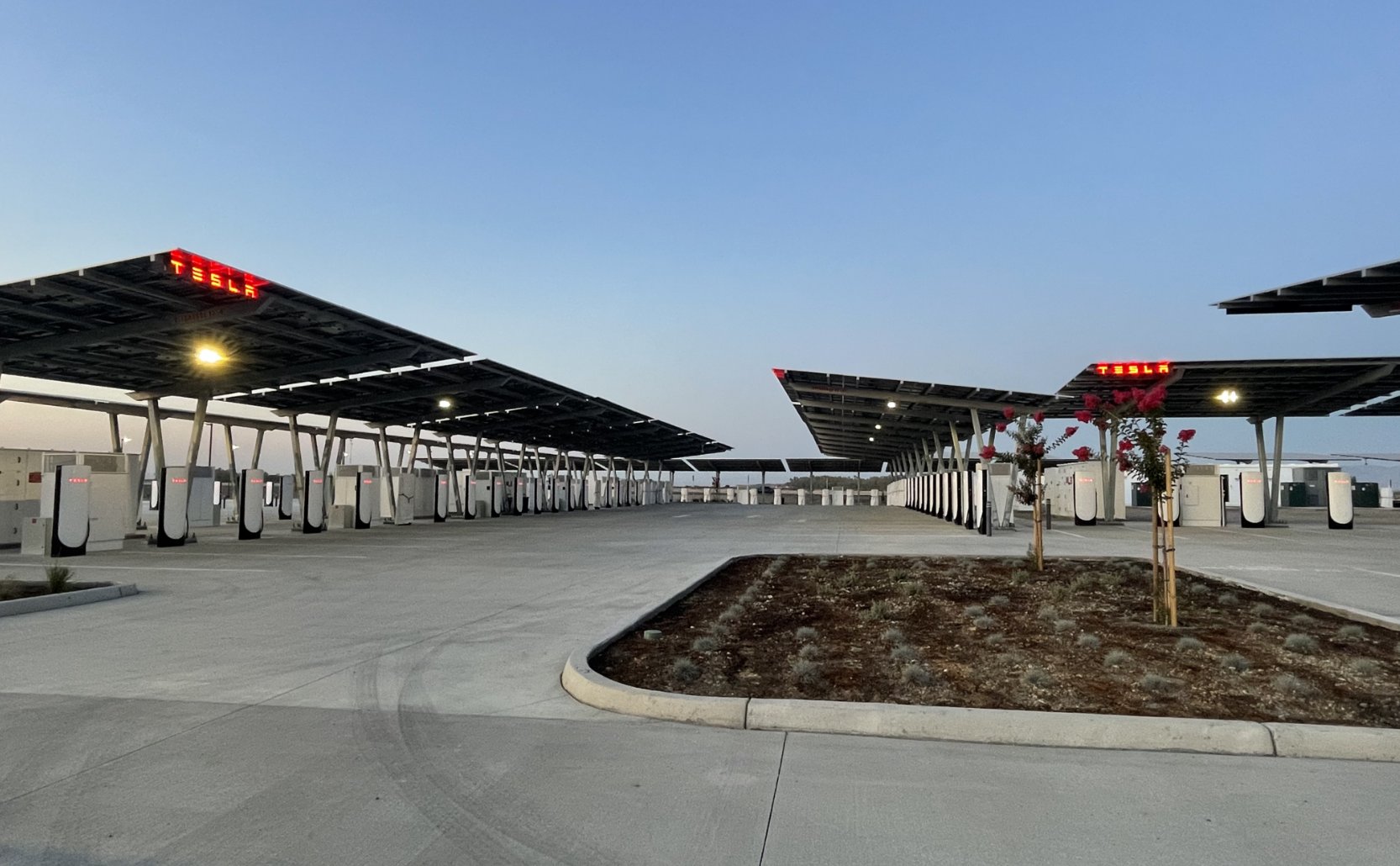
Tesla has officially launched the first several Supercharging posts at a massive station in California, notably including solar canopies and grid-scale batteries to offer completely renewable charging.
Last week, Tesla announced on X that it opened the first 84 Supercharger stalls of a planned 168-stall station in Lost Hills, California. Additionally, the massive Supercharger project features 11MW of solar canopies and 10 Megapack batteries for off-grid charging powered entirely by solar energy.
Tesla completed the first phase of the project just days ahead of the busy Fourth of July holiday weekend, adding that initial construction took just eight months. In addition to the remaining charging stalls, Tesla says it’s building a set of lounge areas, renderings of which can be seen below alongside current photos of the site.
Notably, the site also includes V4 charging posts for the company’s latest available charging speeds, and it’s located near the busy junction between I-5 and Highway 46 in Kern County.
“Thank you [Kern County] and [PG&E] for collaboration and approvals,” Tesla wrote in a follow-up post.
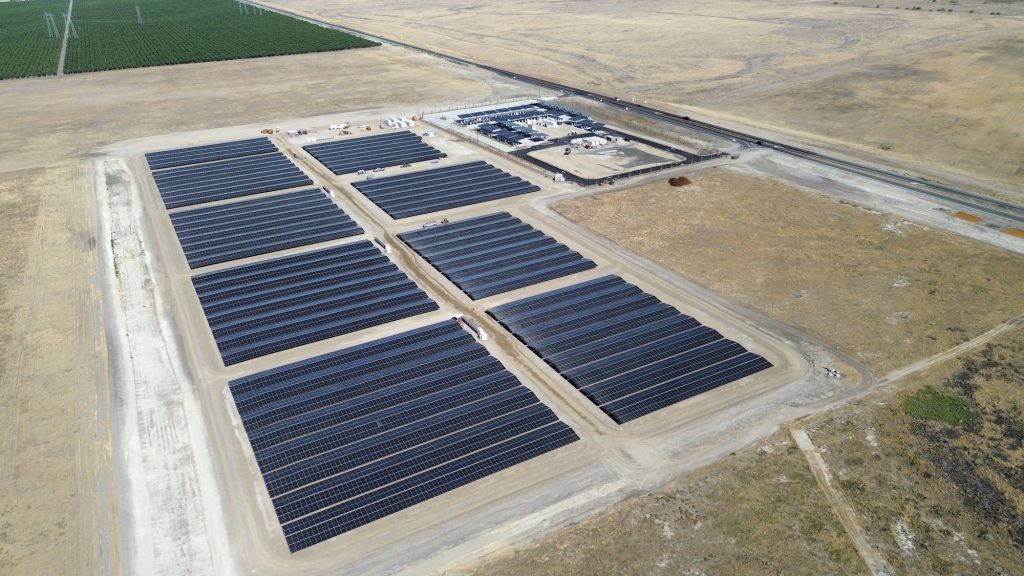
Credit: Tesla Charging | X

Credit: Tesla Charging | X

Credit: Tesla Charging | X

Credit: Tesla Charging | X
Tesla Supercharger Maps for North America, Europe, and Asia pic.twitter.com/0U5r0XRPyo
— TESLARATI (@Teslarati) July 2, 2025
READ MORE ON TESLA SUPERCHARGERS: Tesla launches ultra-fast V4 Superchargers in China for the first time
Testing at the LA Diner, plus Musk update on potential Tesla solar Gigafactory
The huge Tesla Supercharger station completed phase one of construction fairly quickly, especially given how long Tesla has been working on its unique Los Angeles diner, drive-in, and Supercharger location. Still, the company was seen performing some testing at the nearly-completed charging station earlier this month, and will reportedly be holding a job fair.
Elon Musk also responded on Monday morning to a post on X, suggesting that Tesla is “thinking about” building a U.S.-based solar Gigafactory in order to help support increased power needs with AI growth, and to bolster domestic solar production.
Tesla is building a new UFO-inspired Supercharger in the heart of Alien country
News
Tesla driver walks away from major accident with minor injuries
The driver sustained only minor injuries, and the exact cause of the crash remains under investigation.

The driver of a Tesla Model Y survived and walked away from a harrowing accident on Monday in California, only sustaining minor injuries despite the vehicle being impaled by a guardrail.
On Monday morning around 4:34 a.m., the Los Banos division of the California Highway Patrol (CHP) responded to the accident on I-5 near Panoche Road, involving a 23-year-old in a Tesla Model Y. According to a post on social media, the driver veered off the road for unknown reasons in the northbound lane, before crashing directly into the guardrail and impaling the vehicle.
You can read the full message and photos from Los Banos CHP below, as were shared in a Facebook post on Monday afternoon.
This morning a Tesla model y was traveling in the #1 northbound lane of I-5 north of Panoche Rd. For unknown reasons driver allowed V-1 to veer off the roadway, travel through a dirt center divide, and crashed into the fixed metal guardrail. Lucky for the driver he only sustained minor injuries and was able to walk away. Driving a vehicle requires 100% attention to the road. Avoid distractions and focus on driving.

Credit: CHP Los Banos (via Facebook)

Credit: CHP Los Banos (via Facebook)

Credit: CHP Los Banos (via Facebook)
In a statement to SFGate, CHP officer Myles Anderson said that the driver only sustained minor injuries, while no arrests are made and drugs and alcohol are not suspected to have been involved. The report also notes that Tesla’s “cruise control and lane assistance features” were activated, according to Anderson. However, it’s not entirely clear if this is referring to Supervised Full Self-Driving (FSD), or to the cruise control and lane assist features baked into Autopilot.
At the time of writing, CHP has not yet responded to Teslarati’s request for clarification and additional details on the matter.
Tesla Crash Safety Ratings across its lineup: pic.twitter.com/ny30R7ceji
— TESLARATI (@Teslarati) July 1, 2025
READ MORE ON TESLA SAFETY: Tesla rolls out crucial new safety feature aimed at saving children
The news comes after Tesla has touted its vehicles as incredibly safe for many years. In December, for example, the company highlighted receiving top safety scores from regulators on four different continents throughout the world, including from the National Highway Traffic Safety Administration (NHTSA) and the Insurance Institute of Highway Safety (IIHS) in the U.S.
Tesla has also listed the goal of making its vehicles the safest on the road throughout the years, both in the overall design of its vehicles and in its Autopilot and Full Self-Driving (FSD) programs.
Tesla Model 3 ranks as the safest new car in Europe for 2025, per Euro NCAP tests
-

 Elon Musk1 week ago
Elon Musk1 week agoTesla investors will be shocked by Jim Cramer’s latest assessment
-

 News2 weeks ago
News2 weeks agoTesla Robotaxi’s biggest challenge seems to be this one thing
-

 News2 weeks ago
News2 weeks agoWatch the first true Tesla Robotaxi intervention by safety monitor
-

 Elon Musk2 weeks ago
Elon Musk2 weeks agoA Tesla just delivered itself to a customer autonomously, Elon Musk confirms
-

 News2 weeks ago
News2 weeks agoTesla Robotaxi rollout proves that Elon Musk still delivers, even if it’s late
-

 Elon Musk2 weeks ago
Elon Musk2 weeks agoxAI welcomes Memphis pollution results, environmental groups push back
-

 Elon Musk2 weeks ago
Elon Musk2 weeks agoElon Musk commends Tesla team on successful Robotaxi launch
-

 Elon Musk2 weeks ago
Elon Musk2 weeks agoElon Musk confirms Tesla Optimus V3 already uses Grok voice AI





















